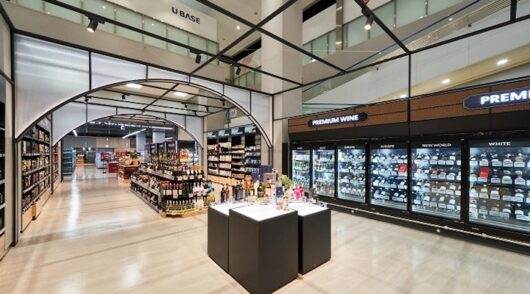A joint survey by KPMG China and GS1 Hong Kong has found that 52 per cent of Greater Bay Area shoppers expect their online spending next year will exceed the amount they spend offline.
The findings are indicative of increased opportunities available to smart retailers.
The survey was designed to provide an overview of the latest omni-channel commerce trends and developments in the GBA from both a business and a consumer perspective. 1400 consumers across 10 cities in the GBA were invited to respond, as well as nearly 300 Hong Kong-based CEOs, assessing current and future consumer habits as well as opportunities and challenges for adopting omni-channel business models.
The consumer survey found that 96 per cent of respondents in mainland China and 82 per cent in Hong Kong plan to spend more online next year. While Taobao, Tmall and JD are among the top online shopping channels for GBA consumers, the survey also found that a number of local and international integrated shopping platforms, including Amazon, HKTVmall, Rakuten, Pinduoduo and Yihaodian have secured considerable market share.
Anson Bailey, head of consumer and retail, ASPAC, at KPMG China, said: “As we continue to see customer needs changing and digital platforms emerging, CEOs need to better understand the consumers across the GBA since they are more tech savvy than ever before and are looking for a better and more streamlined customer experience.”
Almost half of mainland China respondents indicated smart environment (such as energy saving and sustainability), service robots (such as use of artificial intelligence, smart sensors, IoT devices) and smart transport (including autonomous vehicles/drones) as important drivers. In Hong Kong, 43 per cent of surveyed consumers identified new payment methods; 53 per cent of surveyed CEOs shared the same view.
Anna Lin, Chief Executive of GS1 Hong Kong, said “Everything in the physical world has a digital twin.
Technology like IoT bridges the gap between ‘online’ and ‘offline’, yet a common language is needed for different devices and systems to be able to communicate in an automated way and to understand data in the same way. Leveraging global standards, even ‘dumb’ products can be tracked by their unique identifiers, and it allows businesses to develop an integrated O2O strategy to engage consumers.”
In terms of challenges for implementing or enhancing omni-channel, 57 per cent of surveyed CEOs highlighted the lack of talent, followed by integration of data (47 per cent), and uncertainties regarding which technologies will deliver the greatest returns (45 per cent). A third of surveyed CEOs highlighted “consumers’ concerns over data privacy” as the main challenge for e-commerce in Hong Kong.
Bailey concluded: “Consumers in both Mainland China and Hong Kong, especially millennials and their successors, are looking for a more seamless and transparent shopping experience. They want payment to be fully integrated and delivery to be immediate. Companies in the GBA should consider combining newly available cost-effective technology with new ways of working. This is particularly important, considering the rapid economic growth and further collaboration across the cities within the GBA.”
Greater Bay Area shoppers plan to spend more online than offline






